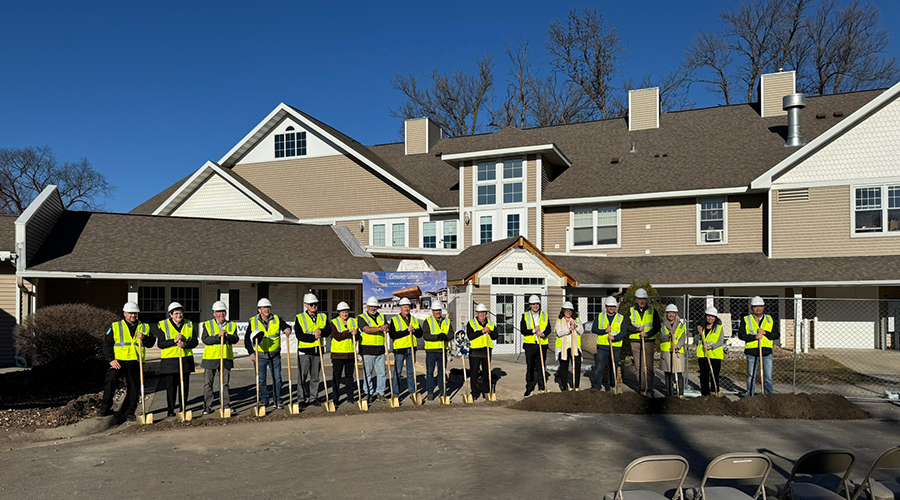Healthcare providers have always had to design and maintain intelligent infection control practices, in order to provide their staff, patients and visitors with the safest possible environment, so as to minimize, if not eliminate entirely the spread of opportunistic infections. The emergence of “super-bugs” and antibiotic resistant pathogens, in the last 10-15 years, has made the proper application of practices even more crucial.
Infection control practices cover may different areas within a healthcare facility. As recommended by the World Health Organization, they can range from “Standard Practices” (hand-washing & antisepsis, personal protective clothing, etc.), to “Additional Transmission-Based Precautions” (airborne precautions, droplets precautions to contact precautions), to “Environmental Management Practices” (air, water, cleaning of the hospital environment, and waste management).
The Air Management portion of protecting a healthcare facility’s occupants and users is often underrated and under-managed. There are several known methodologies and technologies that, when layered on top of each other, can have a major positive effects on improving conditions and outcomes of a stay in a healthcare facility.
Air is a basic human need, but the quality of that air is vital. Just as we instinctively feel that ‘sea air’ or ‘country air’ is cleaner and fresher than the air in our cities, so the air quality in our places of work varies, and can have a significant impact on health and resulting productivity.
In healthcare facilities, occupants can be exposed to a range of airborne pollutants that typically include chemicals, micro-organisms and particles originating from sources both within and outside the building.
Off-gassed volatile organic compounds (VOCs), allergens and asthma allergens (“asthmagens”) make for a veritable cocktail of potential pollutants that may come from building materials, carpets, finishes, cleaning products, office equipment, building densification, and in some cases, outside (ambient) air.
The various health implications associated with poor indoor air quality – from respiratory problems to hospital acquired infections (HAIs) to irritants – have been the subject of research for a long time and are well established. But as we better understand the impacts, so our understanding changes on what is considered acceptable or desirable.
Design strategies that ensure good air quality are a per-requisite for a healthy and productive healthcare environment.
Although both are important, there is distinction between ensuring a supply of fresh air through indoor air quality technology, and stopping pollutants at the source by minimizing the ‘off-gassing’ of materials, both of which are discussed below.
When it comes to different technologies and methodologies for the management of the indoor air quality of a healthcare facility, they can be broken down into 2 main categories: air filtration, and air purification.
Air “Filtration” consists of passing the air you want to treat through a device/system (filter mechanism) to capture the physical or gaseous contaminants you want to remove from the air. These systems can only treat the air that is passed through them. As a result, to be as effective as possible, the more air exchanges in a space, the better. Common areas (administrative, hallways, lobbies, offices, etc) will get 5 to 6 air exchanges/hr (thereby treating as much as 50% of the air in a space), whereas more critical-care areas (emergency, operating rooms, etc, can range from 15 to 25 air exchanges/hr (thereby treating as much as 95% of the air in the space).
Filters are rated on a scale of efficiency known as a MERV rating (Minimum Efficiency Reporting Value). The scale is designed to represent the worst-case performance of a filter when dealing with particles in the range of 0.3 to 10 micrometers. The MERV rating is from 1 to 16. Higher MERV ratings correspond to a greater percentage of particles captured on each pass, with a MERV 16 filter capturing more than 95% of particles over the full range. The higher efficiency, the more (and smaller) particulates the filter can capture.
For reducing potentially toxic VOCs (volatile organic compounds, or gasses emitted by various materials or activities inside the space),“Gas-Phase” filtration uses sorbent (absorbing) compounds such as activated carbon to remove these VOCs, with varying degrees of effectiveness. Again, the air you want to treat has to pass through such filtration systems.
Air “Purification”, on the other hand consists of treating the air itself and trying to breakdown its airborne contaminants, instead of necessarily capturing them, by submitting them to some bio/chemical process.
Some of the better known and used “air purification technologies” that have been around long enough (decades) to prove their worth are PCO (Photo-Catalytic Oxidation, aka “Titanium Dioxide”), UV (Ultra-Violet light), and BPI (Bi-Polar Ionization).
Their main differences are:
• PCO produces mainly Hydroxyl agents that attack and breakdown carbon-based contaminants, such as harmful micro-organisms (mold, viruses, bacteria). PCO air purifiers need to bring the air through the devices to purify the air.
• UV systems short-wavelength ultraviolet light to kill or inactivate microorganisms by destroying nucleic acids and disrupting their DNA, so they can no longer perform their cellular functions. Their limitations are that they require “exposure time” (several minutes) and can only affect areas that the UV light shines in directly. Microorganisms that pass through UV light with some velocity do not get enough exposure time to be affected. UV works well on HVAC coils, or for sterilizing surgical instruments.
• BPI works by converting the oxygen molecules that we breath into a mixture of positively and negatively charged “air ions” that immediately seek out and interact with a variety of airborne contaminants ranging from particulates, pollen, dust, VOCs, bacteria, viruses, mold and offensive odors, and breaking them down or removing them from populated breathing zones. The advantage of BPI is the ability to purify the air “in the space”, where the contaminants are, and not have to depend upon bringing them through the device.
The best and most complete air quality management strategy is one that uses a combination of air filtration and air purification, to use their best qualities in a complimentary manner, as part of an overall infection control management strategy.
The indoor air quality in a healthcare facility is vital. And something to consider when building a new facility, or renovating an existing one.
Carlos Gendron is the Vice President of Marketing for AtmosAir Solutions of Fairfield, Conn.

 Healthcare Is the New Retail
Healthcare Is the New Retail Bridgeway Behavioral Health Services Launches Campaign to Renovate Health Center
Bridgeway Behavioral Health Services Launches Campaign to Renovate Health Center Ground Broken for New North Dakota State Hospital
Ground Broken for New North Dakota State Hospital AI Usage for Healthcare Facilities
AI Usage for Healthcare Facilities Ground Broken on Pelican Valley Senior Living Modernization Project
Ground Broken on Pelican Valley Senior Living Modernization Project